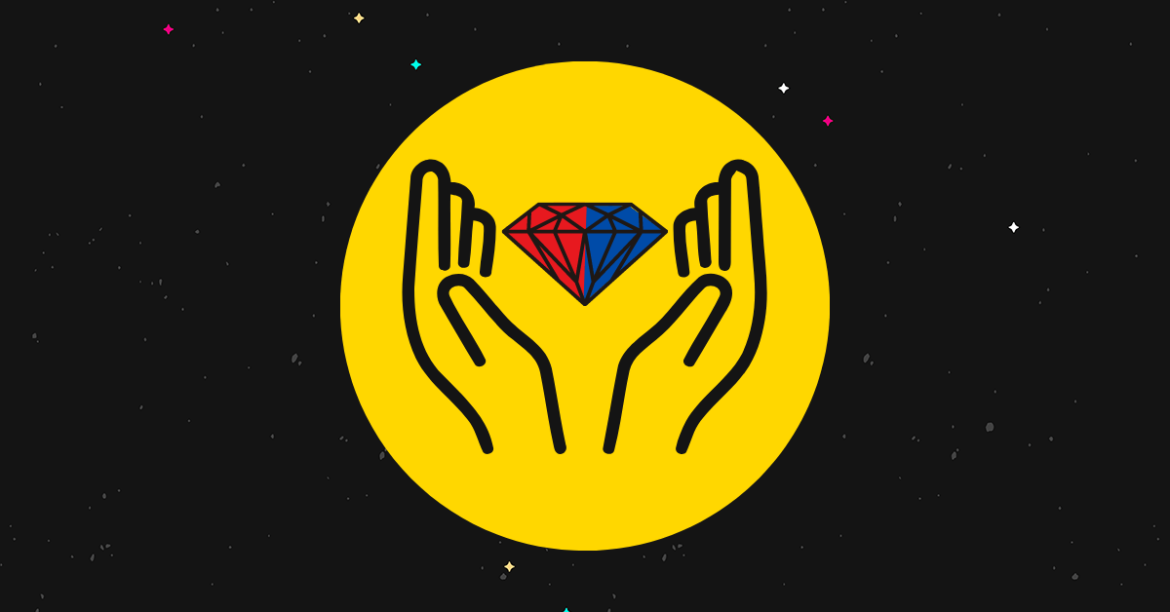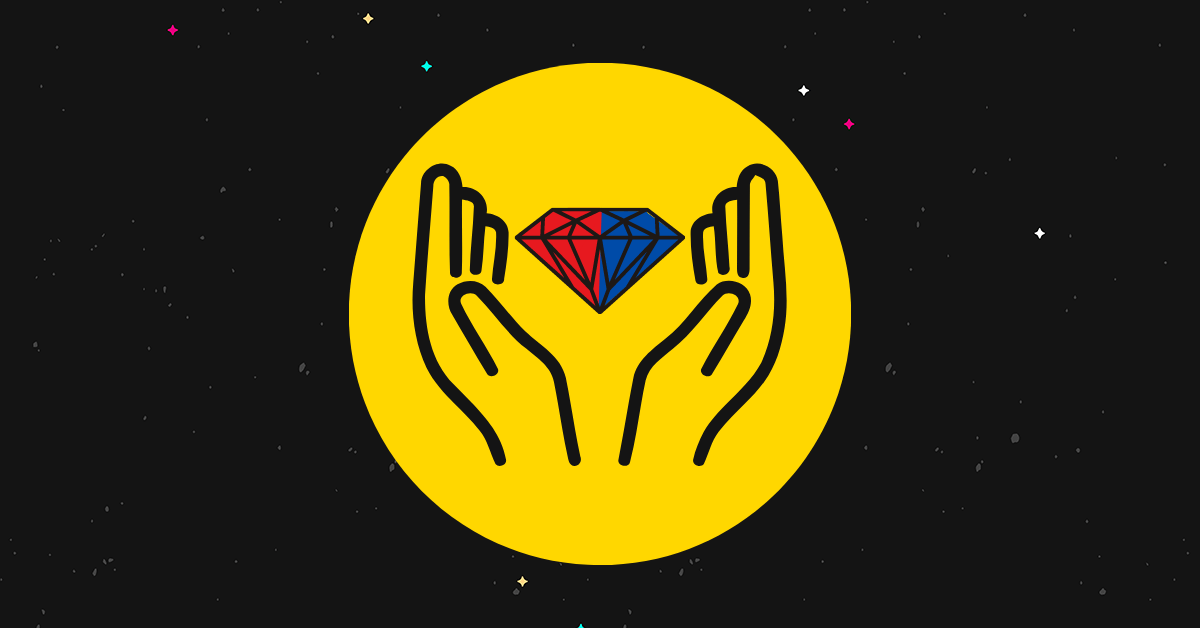Coming up with a good value proposition is hard enough as it is. Coming up with a unique value proposition is even harder.
Even so, your target customer is looking for something specific in your niche.
A value proposition helps you deliver that something to future customers.
In this post, we’ve listed a handful of content creators with audiences of all sizes.
We explain what each creator’s value proposition is and how they implement it with their content and company’s product.
And towards the end of the post, you’ll find a step-by-step process for creating your own.
Let’s get into it.
Value proposition examples to inspire you
1. Stephen King
Creator Class: Author
Product: Books.
Value Proposition: Using inspiration from real-life experiences to create compelling characters in the horror genre.
Let’s start with the biggest name on this list.
Stephen King, as you know, is one of the most popular authors of the modern era as well as one of the best-selling authors of the 20th century.
His work includes classic titles like It, Carrie, The Shining, The Stand, The Green Mile, Salem’s Lot and Pet Sematary, all of which have been made into blockbuster films and television series.
Stephen’s genre is horror, but becoming successful in this genre requires a little more than telling scary stories.
From his debut novel Carrie to works he publishes today, King has always used people in his own life and his own personal experiences as inspiration for his writing.
That’s where his value proposition lies, especially when you compare his work to other authors in his genre.
Through a willingness to share his experiences with the world, he’s able to take a genre that’s normally filled with gore, thrills and frills and make it all the more interesting and terrifying by basing everything from entire works to individual scenes on intriguing characters that seem real and relatable.
This is something he shared in his memoir On Writing: A Memoir of the Craft, a book filled with anecdotes about his works and advice he has for other writers.
For example, he explains how the female protagonist of his debut novel Carrie was created through the combination of two girls he knew from his childhood.
It’s this ability to ingest realism into stories about the supernatural that attract so many readers to his work.
Here’s a direct quote from a lost interview in 1989, which has been animated by PBS Digital Studios.
It gives perspective on his thought process as far as fear and horror writing go.
“I think that in a lot of supernatural stories we’re dealing with fears that exist on a very practical level. And in between those two levels, the shout on top where the make believe is going on and the whisper underneath where the subconscious mind is saying, yes but this could really happen if you just could change a few things. That’s where the story can succeed.
When we deal with the Grand Guigniol, the things that really scare us are the things that are going on just outside the spotlight that you can’t quite see.”
2. Linus Tech Tips

Creator Class: YouTuber
Product: Screwdriver sold in ecommerce store.
Value Proposition: Linus Sebastian, the primary host of Linus Tech Tips, has been working with computers for over 20 years, making his opinion on tech products, including the screwdriver the brand has launched, highly valuable.
Linus Tech Tips is one of the biggest tech channels on YouTube with over 15.4 million subscribers on the platform.
The wider Linus Media Group family has over 26 million subscribers across eight YouTube channels, including Linus Tech Tips.
The primary host and owner of Linus Media Group, Linus Sebastian, got his start as a tech-based video presenter for the now-defunct Canadian tech retailer NCIX.
Linus produced video content for the retailer as an official employee from 2007 to 2013 (when he formed Linus Media Group and went fulltime with Linus Tech Tips) and on contract until 2015.
Throughout his time on both channels, Linus could always be seen using a specific bright orange, ratcheting screwdriver from Snap On in his videos.
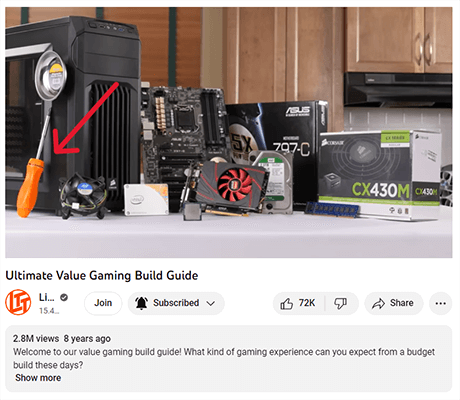
Rather than simply carry this screwdriver, which is now very hard to find outside of eBay, in the Linus Tech Tips Store, Linus Media Group decided to design their own, which they launched in mid 2022.
It was created through a collaboration with Megapro whose screwdrivers are similar to Linus’ original orange screwdriver.
In a just-shy-of-30-minutes video explaining how it took three years between announcement and launch, Linus explains how they didn’t want to simply rebrand a current Megapro screwdriver.
Instead, Linus tasked an employee and even hired their own engineer to come up with a design that was good enough to replace Linus’ orange screwdriver, housed Megapro’s mechanism and whose shape would sustain throughout the manufacturing process.
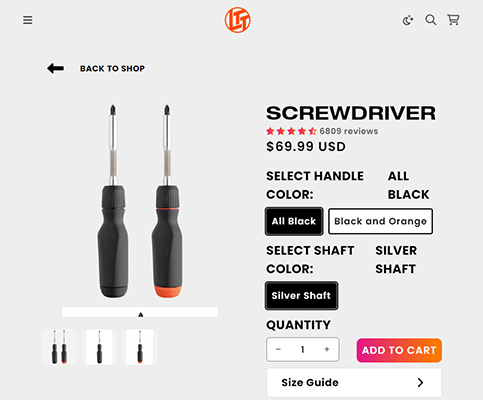
It’s this dedication to quality and Linus’ own knowledge and personal opinion of what makes a screwdriver suitable for tech that makes a $70 screwdriver seem worth it, especially to fans of the channel.
As of now, the screwdriver has a 4.5-star rating out of over 6,800 reviews.
3. NileRed
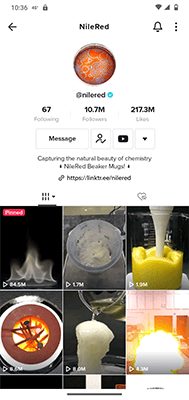
Creator Class: TikToker and YouTuber
Product: Content.
Value Proposition: He makes videos on chemistry experiments but has a Bachelor of Science degree in biochemistry and a minor is pharmacology.
NileRed is a TikTok creator with 10.7 million followers as well as a YouTuber with 4.99 million subscribers.
He publishes science-based content to both platforms, publishing 30-minute to hour-long chemistry experiments to YouTube and one to three-minute long experiments on TikTok.
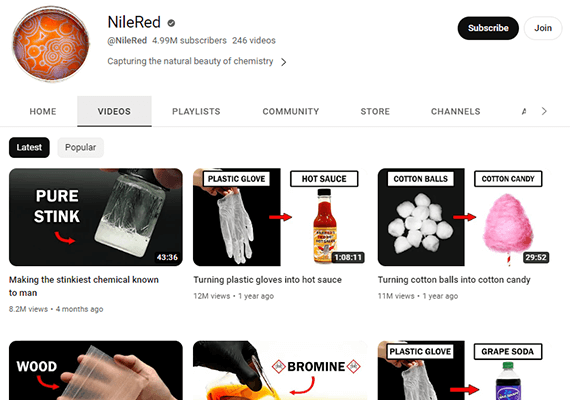
He’s mostly active on TikTok where he only publishes one to a few videos a month but still manages to accumulate millions and millions of views per video.
One might wonder how he does this when other TikTok creators upload videos daily and still never see those results.
Well, we can name a few reasons that have nothing to do with NileRed’s value proposition.
For starters, his TikToks are short and to the point. He doesn’t pad them with introductions and outros where he talks to the camera.
He gets right into the experiment, and the final shot is always the result.

HIs clear and friendly tone of voice also draws you in, but beyond those factors, NileRed’s education and professional experience in biochemistry are the true powerhouses behind his content.
Everything he does in his experiments has a reason, as he predicts what should or should have happened when he mixes two chemicals or does something with them in particular through his voice-over narrations.
It’s subtle, but his passive knowledge of the subject makes his videos all the more captivating as he’s able to simplify scientific explanations for a non-scientific audience.
Plus, because he’s educated in the field of chemistry, you can always trust his videos to be interesting as he has enough experience in the subject to know how to get a reaction, even if it’s not the reaction he was expecting.
4. Logan’s Candies
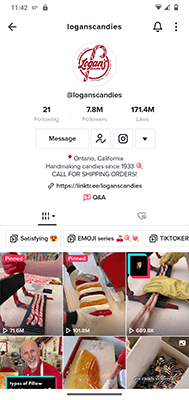
Creator Class: TikToker
Product: Candy sold in person and through phone orders.
Value Proposition: Logan’s Candies has been producing handmade candy in store since 1933, and the primary host of their TikToks has more than 40 years of personal experience in candy making.
A lot of TikTok creators upload videos demonstrating how they make their products, but no one does it quite like Logan’s Candies.
Logan’s Candies is a candy store located in Ontario, California.
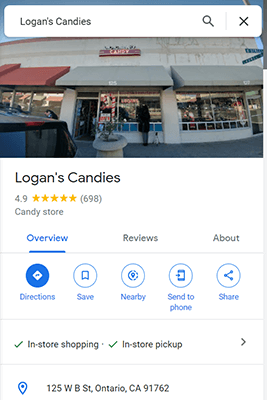
The store has over 600 candies available in shop, 200 of which they make themselves.
Among their most popular treats are their candy pillows, ribbon candy and candy canes.
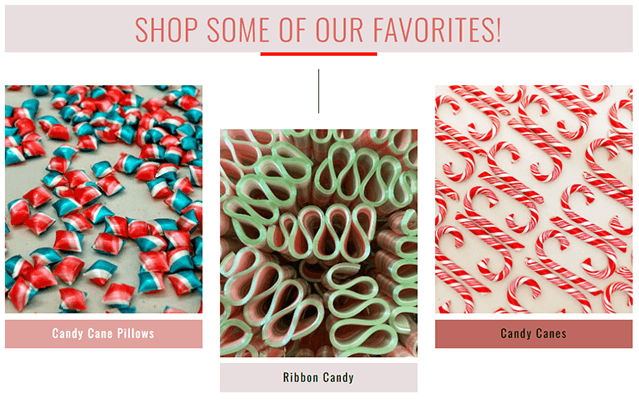
Their TikTok content ranges from short 15-second clips of breaking crimped candy strips into pillows to full on minutes-long demonstrations of the candy-making demos the shop gives in person.
This all goes into the charm that encompasses the entire Logan’s Candies brand.
The shop was originally founded by the Logan family in 1933 but is currently owned and operated by Jerry Rowley, the primary host of the TikTok account’s videos, and his wife Susi.
As their website puts it, Jerry:
“started working seasonally at Logan’s at the young age of 12 and continued to work under 3 different owners learning the trade of candy making. At the age of 19, Jerry & his wife, Susi Rowley, took over the store in 1982 and have been running the shop ever since!”
It’s the 90 years of history behind the brand along with Jerry’s knowledge in candy making and charismatic persona that separates the shop’s content from others like it.
5. ReVive Skateboards
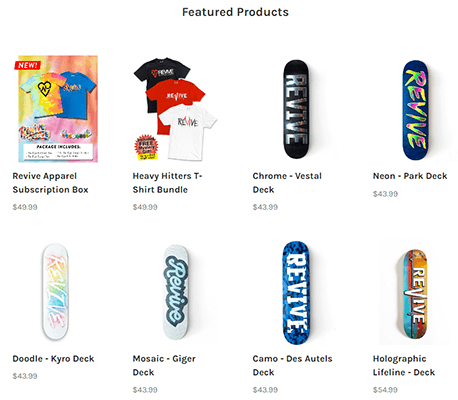
Creator Class: YouTuber
Product: Skateboard decks and related products.
Value Proposition: The company’s primary marketing strategy involves video content uploaded to Andrew Shrock’s, the brand’s owner, YouTube channel. Andy has been skating for over 20 years, and his brand collaborates with skaters who’ve been skating for just as long.
ReVive Skateboards is a skateboard deck brand founded by Cincinnati-based skater Andrew Shrock and his friend and business partner Brian Ambs.
Andy also owns skateboard wheel brand Force Wheels.
The company sells everything on an online store called The Shredquarters.
Both products receive new rotations a couple times a year, meaning the company releases new deck and wheel designs every few months.
Each product also comes in different sizes, giving skaters the opportunity to choose deck and wheel sizes that work for them.
ReVive Skateboards and Force Wheels sponsors a small handful of skaters (Aaron Kyro of Braille Skateboarding, John Hill, Jonny Giger and more) as a way to market both brands.
In fact, many of the designs featured in new rotations are chosen by and made for each skater.
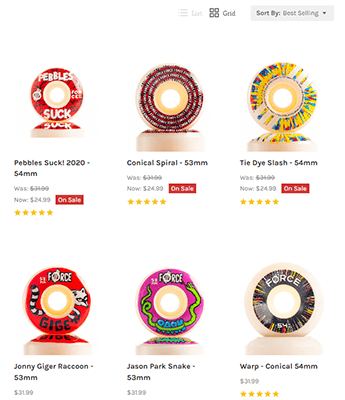
The brands’ primary marketing strategy is Andy’s YouTube channel, which has 5.26 million subscribers.
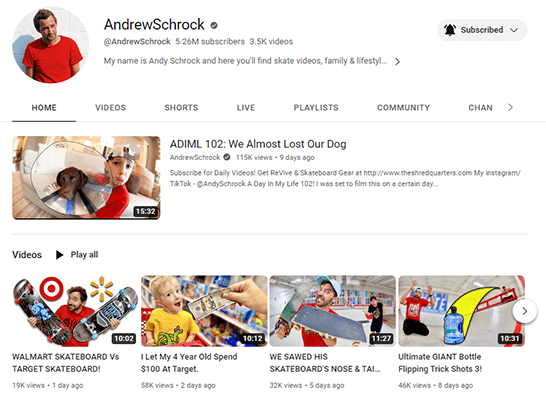
Andy primarily uploaded skating content for years, normally with his team and a few friends in the company’s personal skatepark.
He now uploads a bit of everything, including family vlogs with his two young sons.
In fact, the channel’s most popular videos feature nothing more than Shrock and his son Ryden having fun with some sort of activity.
Nevertheless, the channel has helped propel ReVive Skateboards in the world of skating, especially among a new generation of skaters.
However, Andy’s experience in skating and positive attitude toward life are just as important as far as getting skaters to actually buy the brand go.
It’s the simple social proof effect: when wannabe skaters, inexperienced skaters and veterans who are open to trying new brands see an experienced skater like Andy skating and having fun with a few friends, they want to experience that for themselves.
This goes double when these same skaters see skaters like Aaron Kyro and John Hill promoting the brand.
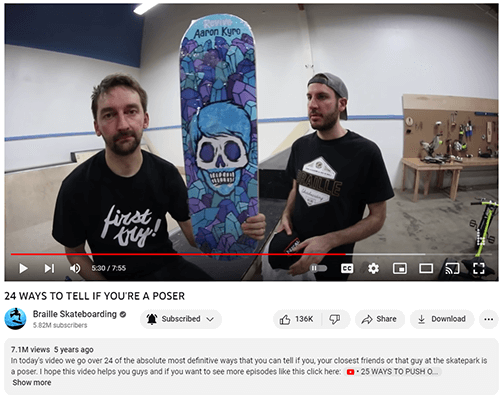
The next logical step is to visit Shrock’s online store, which has everything skaters need to build a new skateboard, including complete skateboards that are already built!
6. SpectreSoundStudios
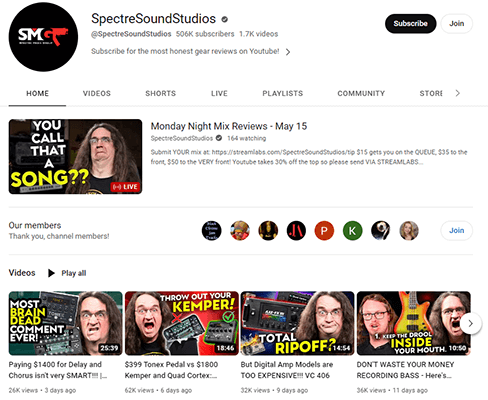
Creator Class: YouTuber
Product: Content
Value Proposition: The channel uploads tutorials on recording hard rock and heavy metal music along with reviews on gear. The channel’s host, Glenn Fricker, has over 16 years of experience in making records.
SpectreSoundStudios is the YouTube channel of audio engineer Glenn Fricker. The channel has over 506,000 subscribers.
Glenn’s focus is the metal and hard rock genres of music.
He publishes everything from tutorials on how to record specific instruments or use certain gear to reviews on those same instruments and gear.
He even publishes more opinionated videos in which he shares an opinion of, debunks or defends a specific topic in the industry.
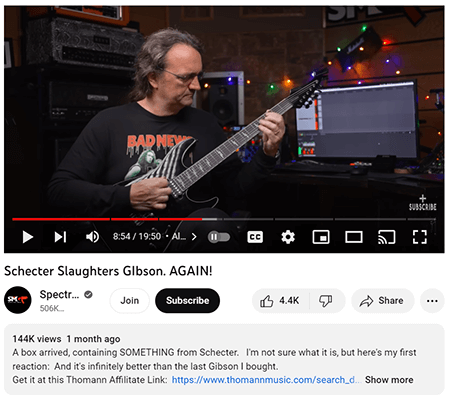
However, there are plenty of YouTubers who upload videos on recording music, so why choose SpectreSoundStudios over other YouTubers who publish the same types of content on the same types of gear?
There are a couple different reasons.
The first is target audience. Glenn’s content primarily focuses on metal.
No matter what type of video he uploads, it will always have a focus on how whatever instrument, gear or concept he’s discussing affects recording for heavier music, not all music.
Most other YouTubers in this niche focus on these subjects from a broader perspective.
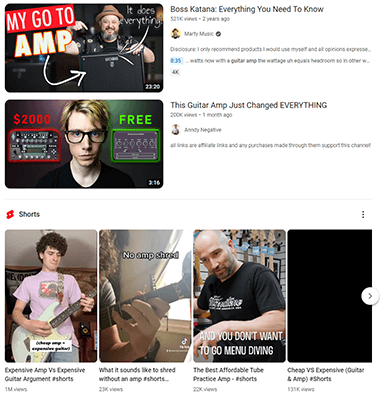
The second part of SpectreSoundStudios’ value prop has to do with Glenn’s own knowledge and experience in the industry.
After all, he has over 16 years of experience in making records in the hard rock and heavy metal genres.
Every opinion he gives on his channel is backed by years of experience in choosing the right instruments and gear for metal-based projects and even using those instruments and gear effectively.
This gives Glenn a competitive advantage in his niche.
7. Sugar Free Londoner
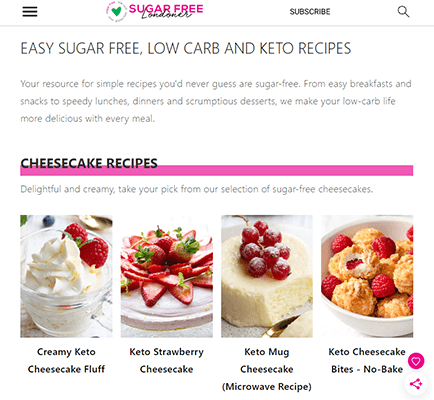
Creator Class: Blogger
Product: Content, but she also sells meal plans and cookbooks on her site.
Value Proposition: Her content focuses on desserts and other treats, but all her recipes are sugar free and low in carbohydrates. Katrin has experience living a low-carb lifestyle due to past health issues.
Sugar Free Londoner is a food blog founded by London-based food blogger Katrin Nürnberger.
She publishes sugar-free dessert recipes that are designed to be low carb and keto friendly.
This is good as many sugar-free snacks you can find on the shelves of your local grocery store have just as many carbs as their sugar-based counterparts, making them just as likely to cause spikes in your blood sugar levels.
This plays into Katrin’s value proposition as a food blogger.
There are plenty of food blogs on the web based entirely on desserts, even some that are based on sugar-free recipes like Katrin’s.
But no blogger does it quite like her.
For starters, her recipes have been independently certified by Sugarwise, an international authority for sugar-related claims.
Plus, she herself must follow a sugar-free diet following repeated issues with internal inflammation, which were eased through experimental sugar detoxes.
This makes her recipes more trustworthy than others as they represent how she herself must choose sugar free options over sugar-based foods, no matter how much better the latter may taste.
She started the blog as a way to help others fall in love with desserts again in a sugar-free, low-carb and safe manner.
Plus, because she uses low-carb flours, many of her recipes are gluten free by default.
How to create your own value proposition
Let’s do a brief summary of the value propositions listed above.
From Item #1 to #7, and without being too specific, we have unique selling proposition examples for books, a niche tech product, video content, handmade goods, niche sporting equipment, video content and recipes.
We chose these examples for a few different reasons:
- They’re all from creators who have large followings despite creating content for saturated niches.
- They give clear-cut examples of how you can use your own experiences and credentials to control how you create your content.
Not many horror writers in the 70s were creating characters as captivating as Stephen King’s.
Similarly, not many tech-based YouTubers would spend three years and “hundreds of thousands of dollars” developing a screwdriver.
The best value propositions come from creators who are willing to think outside the box.
That’s exactly what you need to do.
Final thoughts + the components of a strong value proposition for content creators
Here’s a quick step-by-step rundown of everything you need to do in order to develop a great value proposition:
- Identify your target market.
- Consider your credentials.
- Research your competitors.
- Revamp your content marketing strategy with these findings in mind.
Let’s break these steps down.
1. Identifying your target market.
Identifying your target market is a step beyond finding your niche.
After you find your niche, do a bit of research on it to identify the main issue (or an issue you feel you can tackle, at the very least) members of that niche have with it.
That is your target market.
You can find your audience’s biggest pain points using a few different methods, including asking them directly, making note of questions you get frequently, and spotting complaints they’ve made in product reviews, YouTube comment sections and social media.
2. Considering what you bring to the table.
When it comes to any topic, you’re either incredibly experienced with it, fairly familiar with it or a complete beginner.
Your job is to determine where you fall within this spectrum. It’ll determine how you approach your content and product development.
Consider what benefits you bring to the table, if it helps.
That is, what do your followers get from watching your content? What sort of customer value do your products bring?
3. Research!
There’s a very good chance that no matter how unique you think your niche is, there are already quite a few others who already have a following within it.
That’s okay!
You just need to be diligent by conducting a bit of research on your competitors.
Try to spot a few things: the types of content they create, and how they present that content to their audience.
Make note of the social media channels they use, their marketing materials and any products they’ve released.
Make a pros and cons list for each point.
You can use the Pros list as inspiration for how to approach your content and products.
Use the Cons list to determine ways in which you can fill in any gaps your competitors are leaving in your niche.
4. Revamping your approach to content and product development.
You should have a few things by this point:
- A niche.
- A problem you can tackle in that niche.
- An understanding of the benefits you bring to your target market.
- An understanding of what your competitors are doing right and what they miss their marks on.
This will give you an idea of how to approach the content you create and the products you release.
For example, if you’re experienced in your niche and you feel most content creators don’t do a good job of simplifying topics for target customers, approach your content with this in mind.
Challenge yourself to take a complex subject and simplify it for an audience that may not be familiar with your niche.
Similarly, if you’re not experienced in your niche, your value proposition is dependent on that fact.
You can demonstrate the process of you becoming experienced in that particular niche by filming yourself completing challenges for it (even if they’re challenges you had to develop yourself) and sharing discussions on what you feel you’re doing wrong.
You bring something unique to the table.
Finding potential customers is all about determining what that something is and learning how to use it to create an effective value proposition.
Related reading:

